Хаас за Испания
Ромен Грожан:
How important is it for Rich Energy Haas F1 Team to put a complete race weekend together at Barcelona, where the speed its shown since testing is carried through practice, qualifying and the race so that you achieve your ultimate goal of scoring points?
Well, it’s always very important, but at the minute the most important thing for us is to get the race pace back. We need to get the car where it should be. The last three weekends haven’t been good for us. The car’s got a lot more potential than we’ve been able to extract. The most important element is not the result. It’s to understand how to make the car go faster.
How helpful is it to go back to Barcelona where Rich Energy Haas F1 Team has the most data of any track in Formula One simply because you spent two weeks testing there before the season even started?
It’s important to go back to Barcelona because it’s our first European race and we’re bringing big updates on the car. It’s a track with high energy, so I’m not too worried about getting the tires to work, in theory. It’s interesting, as we definitely got them to work in winter testing, going back there and seeing if we can still get them to work will be a good test, because we know the car should be fast there.
Does Barcelona allow teams to reassess where they stand because of what they learned in preseason testing and how it’s translated to the first four races?
Yes, but you also know everyone’s going to bring big updates, so it’s almost like everyone’s going to have a B-car, therefore the standings could be a bit different. I think it’s important that our updates go in the right direction. It’s important, as we know what we can do there. We’ll see if we can repeat that and understand where our race pace has gone.
Barcelona was repaved prior to last year’s preseason test. How has the new surface evolved and what are your expectations for your return to the track in much warmer conditions, specifically in regard to tire management?
I have no expectations. We’ll see what’s coming. Normally, the first feedback is quite accurate, so I’m hoping it’s a good one, but I go with no expectation.
What are you feeling inside the racecar when you’re unable to get the tires into their proper working range? Is it a combination of an actual lack of grip and also a lack of confidence in what you can expect from the tires?
It’s a lack of grip and a lack of consistency. The latter makes it so that you can’t have any confidence because you can’t push the tire to its limit. If you do go above the limit, which is very low, it’s a big lock-up or you go off the track. If the tires don’t work, the car can be as good as you want, but it’s just not going to work. Confidence is key in Formula One, but when your tires don’t work, there’s no chance you’ll have some.
Кевин Магнусен: How important is it for Rich Energy Haas F1 Team to put a complete race weekend together at Barcelona, where the speed its shown since testing is carried through practice, qualifying and the race so that you achieve your ultimate goal of scoring points?
The last few weekends have been pretty disappointing. We’re looking forward to, hopefully, a strong result in Barcelona. We know the car is good, as a baseline, but we’re struggling with tires. I trust, and have faith in the team, that we’ll soon sort out these issues. I’m hopeful that in Barcelona we can have a strong weekend.
How helpful is it to go back to Barcelona where Rich Energy Haas F1 Team has the most data of any track in Formula One simply because you spent two weeks testing there before the season even started?
We’ve obviously got some data to look at in Barcelona from testing. We saw earlier in the year the car was competitive in testing there. Hopefully, we can convert some of the data into performance on the race weekend.
Does Barcelona allow teams to reassess where they stand because of what they learned in preseason testing and how it’s translated to the first four races?
Yes. I think it’s a good chance to compare the car from testing to now. The temperatures are still going to be very different, also the track will have been used by other race series since we tested, so it’ll inevitably be different. That said, I think it will be good to reassess where we stand.
Barcelona was repaved prior to last year’s preseason test. How has the new surface evolved and what are your expectations for your return to the track in much warmer conditions, specifically in regard to tire management?
The weakness that we’ve seen this year is our ability to have good performance from the tires in race condition. We struggle a lot less over one lap. It’s in race condition we see the biggest problems. Hopefully, we can work through this issue and see a better performance in Barcelona.
What are you feeling inside the racecar when you’re unable to get the tires into their proper working range? Is it a combination of an actual lack of grip and also a lack of confidence in what you can expect from the tires?
It’s mainly the lack of grip once we’re in race conditions.
Гюнтер Щайнер: How important is it for Rich Energy Haas F1 Team to put a complete race weekend together at Barcelona, where the speed its shown since testing is carried through practice, qualifying and the race so that you achieve your ultimate goal of scoring points?
It’s very important. We’ve had four races and only one was almost completely executed – in Australia – and I say almost as we only had one car at the finish. We know we can qualify well. Barcelona in preseason testing was a very good track for us. We looked very competitive, but we need to show it in a race weekend. We want to show everyone how good we should be if we get the tires to work.
Barcelona seems to be the first race of the year where teams begin its technological arms race amongst one another, with updates being brought to numerous cars. Does Rich Energy Haas F1 Team plan any updates to it racecars for Barcelona? If so, what aspects of the car are getting the majority of your focus?
We’re bringing our first upgrades of the year. A lot of parts on the car will change – the front wing, the floor and a lot of the smaller parts, like mirrors. It’s a quite significant upgrade.
How helpful is it to go back to Barcelona where Rich Energy Haas F1 Team has the most data of any track in Formula One simply because you spent two weeks testing there before the season even started?
It’s very important for that very reason. We have a lot of data. We need to make sure that everything still correlates after four races and that our upgrade works, as well. We’re looking forward to it, to see where we compare from our time there in preseason testing.
Does Barcelona allow teams to reassess where they stand because of what they learned in preseason testing and how it’s translated to the first four races?
It isn’t really that you can go back and compare the first four races, but Barcelona always affords a good point to regroup after the early long-haul races. We’re back in Europe, we’ve got upgrades coming, but you’ve got more to look at with Barcelona because we ran our preseason testing there.
Barcelona was repaved prior to last year’s preseason test. How has the new surface evolved and what are your expectations for your return to the track in much warmer conditions, specifically in regard to tire management?
The hope is that it all works as it did in preseason testing. We’ve obviously lost a little bit of confidence after the last three race weekends, but we haven’t lost it completely. We’re just careful to make predictions. We are cautiously optimistic.





















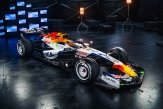
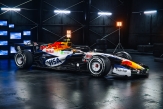

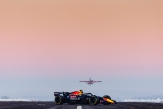
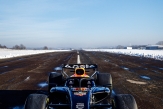
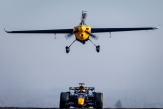
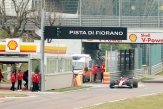
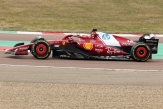
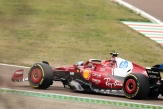
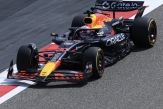
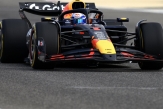
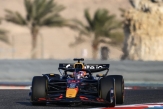

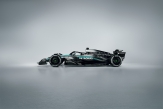
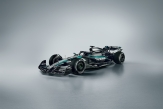


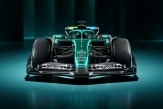
.jpg)
.jpg)
.jpg)

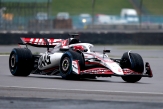

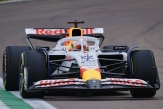
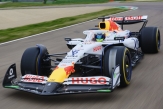

02/12/2025 от Огнян Тенчев (drJeckyll), няма коментари